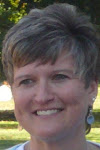This graduate studies program has allowed me the opportunity to become reacquainted with some of the foundational educational theories from my original college days back in the 1980s at the University of North Carolina at Chapel Hill School of Education. Some of the thought is certainly still prevalent, such as Bloom's taxonomy. It seems to me that Bloom laid the groundwork with his hierarchy of higher level thinking for much of the reasoning theory that the contemporary educator and author, Dr. Rick Stiggins describes. The same basic processes are there, such as application, classification, evaluation, comparisons, knowledge, synthesis, that we saw with Bloom. Dr. Stiggins is just so adept at simplifying them into 7 patterns of reasoning and matching these patterns so appropriately with proper assessment. Another concept that has stuck around is that of multiple intelligences. First promoted by Dr. Howard Gardner in the early 1980s, the notion that kids can learn in different ways when the full range of their individual gifts or intelligences are engaged rings so true in the real world classroom. Our kids may get labeled as ADD, but actually, they are our artists, musicians, designers, dancers, and inventors, just waiting for the right motivation. I believe the best teaching incorporates strategies and activities such as cooperative learning, music, multimedia, field trips, and art projects that can connect with kids in terms of the special gifts they possess. (http://www.thomasarmstrong.com/multiple_intelligences.htm). This matches so well with Dr. Stiggins' more current ideas of the full range of assessment methods like performance based and personal communication that can be used to effectively assess learning using these teaching methods.
My newly acquired knowledge of assessment has convicted me of the fact that I have held some outdated ideas in the past about proper assessment. I have never been a fan of rubrics and such, I was a holistic kind of evaluator. But I am convinced now that carefully constructed rubrics and checklists really are the fairest way to assess for both the student and the teacher. I also believe that just like a variety of teaching methods should be implemented, a variety of assessment methods should as well. I agree with assessment expert, Grant Wiggins, that high-stakes, one shot assessment is a problem and that there is not a one size fits all test out there. Our challenge as educators is to develop reliable, effective, and sound assessment. This course has equipped me to do just that in my classroom.
Concerning technology in education, it is the present and it is most definitely the future. Teachers need to just get on board. State and federal governments have made it a priority and our students are raised on it practically and have a natural inclination towards it. I have recognized these facts and that is why I have chosen this path for an advanced degree. My basic philosophy concerning technology is this - living, breathing, imperfect human beings still teach living, breathing, imperfect human beings. Technology is a wonderful tool to accomplish this task, but the the bottom line is it is still just a tool. A tool that should be used to the fullest capacity to make the real life learning experience more meaningful, effective, and successful. I have used technology more every single year. Over the years, technology has assisted me in tasks like digital grade books, computer generated tests, multimedia presentations, and student research projects. Now it seems the sky is the limit with the ability to integrate podcasts and to use the Internet for course management systems in which students can have access to class materials and assignments at the touch of a hand and at any time. Parents can keep up with the progress of their child day by day if they so choose. These are just a couple of examples of what seems to be a growing list of possibilities available with technology. These are also two of the future goals I have in mind to integrate technology in my teaching. It is exciting and it is here!
Concerning technology in education, it is the present and it is most definitely the future. Teachers need to just get on board. State and federal governments have made it a priority and our students are raised on it practically and have a natural inclination towards it. I have recognized these facts and that is why I have chosen this path for an advanced degree. My basic philosophy concerning technology is this - living, breathing, imperfect human beings still teach living, breathing, imperfect human beings. Technology is a wonderful tool to accomplish this task, but the the bottom line is it is still just a tool. A tool that should be used to the fullest capacity to make the real life learning experience more meaningful, effective, and successful. I have used technology more every single year. Over the years, technology has assisted me in tasks like digital grade books, computer generated tests, multimedia presentations, and student research projects. Now it seems the sky is the limit with the ability to integrate podcasts and to use the Internet for course management systems in which students can have access to class materials and assignments at the touch of a hand and at any time. Parents can keep up with the progress of their child day by day if they so choose. These are just a couple of examples of what seems to be a growing list of possibilities available with technology. These are also two of the future goals I have in mind to integrate technology in my teaching. It is exciting and it is here!
